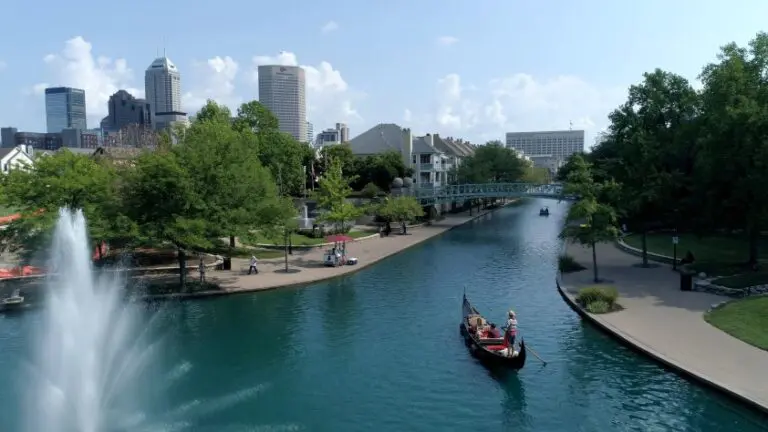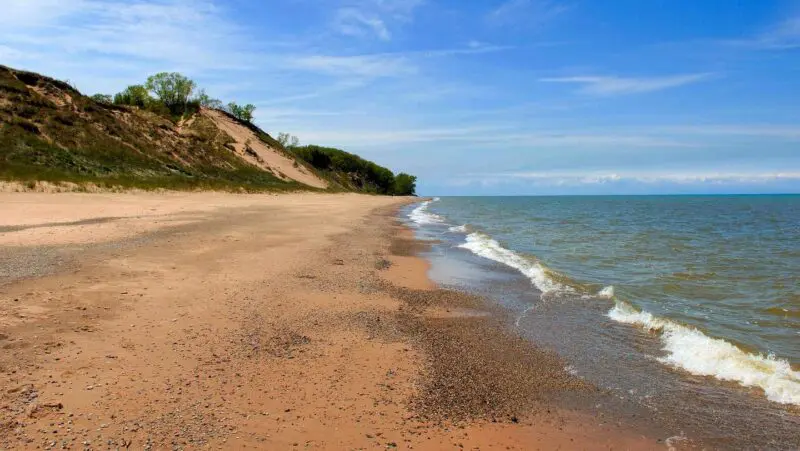Indiana Dunes National Park is a remarkable destination located along the southern shores of Lake Michigan.
With 15 miles of sandy beaches, towering dunes, and thriving ecosystems relatively close to Gary, Indiana, it offers a natural haven.
Its geographic position creates an environment that fosters unique experiences for nature enthusiasts and adventure seekers alike.
Table of Contents
ToggleBiodiversity and Ecosystems
Indiana Dunes National Park showcases an extraordinary array of plant and animal life, boasting over 1,100 species of native plants.
The abundance of life positions the park as one of the most ecologically rich areas in the Midwest.
Its variety of habitats provides homes to a wide range of species, each adapted to thrive in its specific environment.
The park’s habitats include:
For bird enthusiasts, Indiana Dunes is a sought-after destination. It plays a critical role as a stopover for migratory birds, making it a haven for birdwatching.
Species such as sandhill cranes and warblers are frequently spotted, attracting visitors eager to witness their seasonal movements.
The interaction between these habitats supports a complex and thriving ecosystem. Each element of the park contributes to a delicate balance, making it a focal point for ecological research.
Conservation efforts ensure that these habitats remain intact, supporting the park’s role as a refuge for wildlife and a site for environmental education.
Recreational Opportunities
Indiana Dunes National Park offers an array of activities that cater to outdoor enthusiasts, history buffs, and casual visitors alike.
With over 50 miles of trails, the park is a haven for hikers of all skill levels, ensuring that everyone can find an adventure suited to their abilities.
Hiking Adventures
The Cowles Bog Trail provides a scenic journey through lush wetlands, showcasing the park’s ecological variety.
For those seeking a more rigorous experience, Mount Baldy offers a challenging climb that rewards hikers with panoramic views of the dunes and Lake Michigan.
Beach and Water Activities
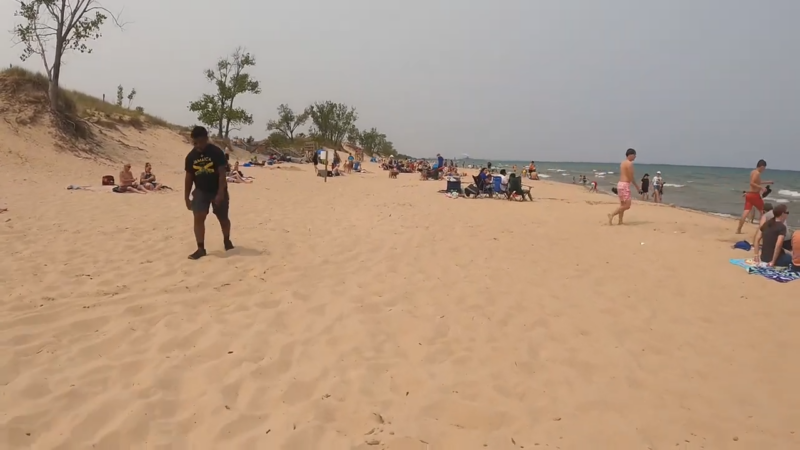
During winter months, visitors can marvel at the shelf ice formations, a seasonal spectacle that adds a distinct visual element to the shoreline.
Seasonal Attractions
Each time of year brings its highlights, ensuring that there is something to enjoy regardless of when you visit.
Spring
- In spring, the area becomes a canvas for vibrant wildflower blooms.
- Colors stretch across the dunes and prairies, creating picturesque scenes that attract photographers and nature lovers.
- Birds also begin their migratory return, making it an excellent season for birdwatching enthusiasts.
Summer
- During summer, the shores of Lake Michigan become the centerpiece of activity. Visitors can swim, paddleboard, or simply relax on the sandy beaches.
- Trails are bustling with hikers, and picnic areas invite families to enjoy meals surrounded by natural beauty.
Autumn
- Autumn brings cooler weather and a display of foliage that transforms the trails into scenic paths of orange, red, and yellow hues.
- It’s a favorite time for hikers seeking a peaceful escape and for photographers capturing seasonal colors.
Winter
- Winter provides a completely different atmosphere, with shelf ice formations on Lake Michigan drawing visitors eager for a glimpse of this seasonal phenomenon.
- The frozen landscape offers an otherworldly experience, complemented by opportunities for cross-country skiing and winter hiking on select trails.
- Indiana Dunes adapts to the seasons, offering something distinctive throughout the year.
Visitor Information
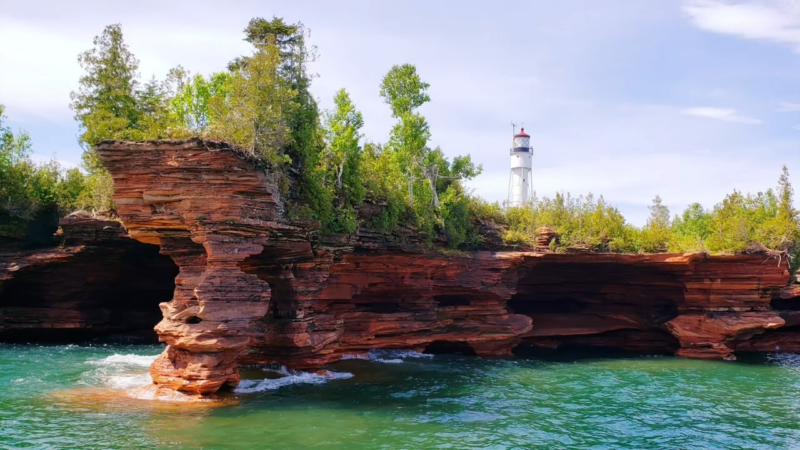
Major highways connect directly to the park, making it a straightforward drive for those traveling by car.
The Indiana Dunes Visitor Center is a vital resource for newcomers and seasoned visitors alike.
Maps, brochures, and advice on trails and seasonal activities can also be found here.
Visitors are encouraged to embrace eco-friendly practices during their time in the park to ensure its preservation for future generations. These practices include:
- Staying on designated trails to prevent habitat damage.
- Packing out all waste, ensuring no litter is left behind.
- Minimizing noise to respect wildlife and other visitors.
Proper preparation is essential for a rewarding visit. Gear recommendations include:
- Sturdy footwear for hiking trails with varying terrain.
- Weather-appropriate clothing, especially for colder months when temperatures can drop significantly.
- Sunscreen and hats for summer visits to protect against sun exposure.
History and Formation
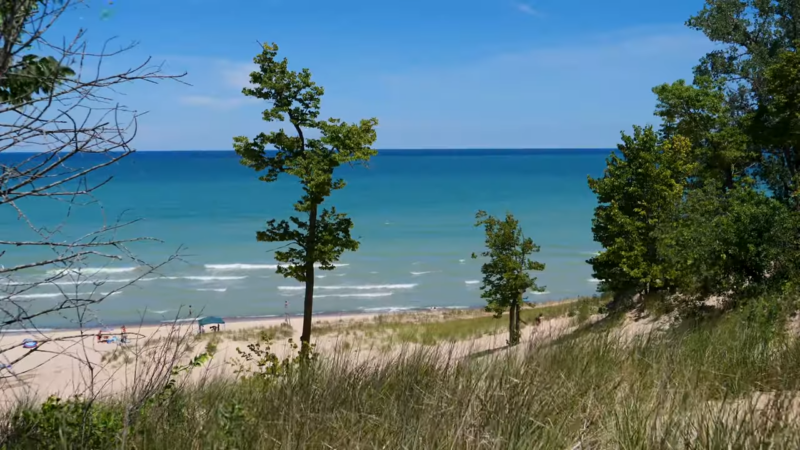
The forces of glaciation during the last Ice Age played a significant role, carving the dunes and depositing sand that was later shaped by the dynamic waters of Lake Michigan.
These natural phenomena resulted in a variety of formations, including towering dunes and interdunal wetlands, creating a terrain admired for its natural features.
For centuries, the Miami and Potawatomi tribes inhabited the region, utilizing its abundant resources for their daily lives and cultural practices.
When European settlers arrived in the 19th century, they brought industry and development that threatened the natural environment. Industrial expansion, including steel mills and power plants, posed challenges to the ecological balance of the dunes.
However, this period also sparked an early conservation movement as individuals recognized the ecological importance of the region.
The Bottom Line
Indiana Dunes National Park combines natural beauty with historical depth, making it a treasure of the American Midwest.
Visitors are invited to discover its offerings while embracing practices that preserve its ecological and cultural integrity.
A trip to this park is an opportunity to connect with the natural world in a meaningful way.





